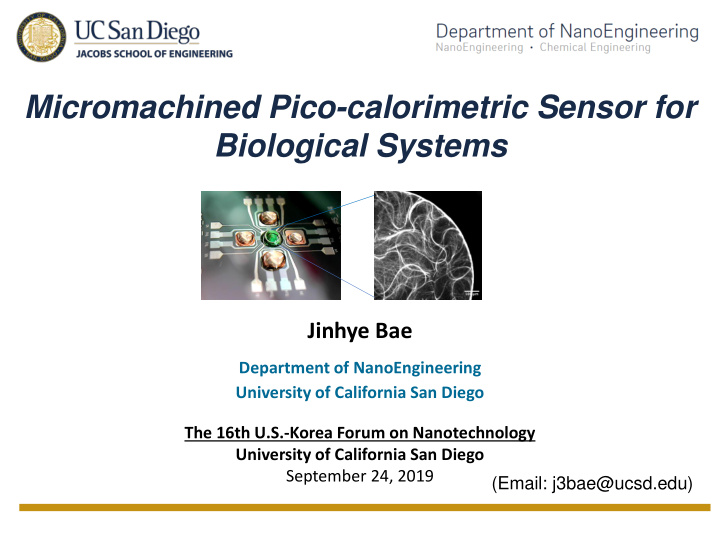



Micromachined Pico-calorimetric Sensor for Biological Systems Jinhye Bae Department of NanoEngineering University of California San Diego The 16th U.S.-Korea Forum on Nanotechnology University of California San Diego September 24, 2019 (Email: j3bae@ucsd.edu)
Active matter Self-collective objects that transduce energy into mechanical work to drive their motion A flock of birds https://www.youtube.com/watch?v=bb9ZTbYGRdc
Microtubule-based active matter Non-equilibrium, but steady state system T. Sanchez et al., Nature 491 , 431-434 (2012) Challenge is developing theory for non-equilibrium self-organized hierarchical systems for active matter Why calorimeters as biosensors? • Small sample volume (~nL) • • High-throughput capability Limitation: low sensitivity • Label-free biosensors • Real-time measurement (the average metabolic rate of a single • Simple sample preparation mammalian cell is ~ 60 pW)
Thermopile-based calorimetric sensors Non-equilibrium thermodynamics of active matter 15 μ M ATP 1500 μ M ATP 8
Future direction Flexible sensor array Micromachined calorimetric sensor Integration of microfluidics Acknowledgements Collaborators: Prof. Joost Vlassak, Prof. Daniel Needleman, Dr. Peter J. Foster (Harvard) Prof. Zvonimir Dogic, Bezia Lemma (UCSB) Materials Research Science and Engineering Center at Harvard University (Award No. DMR- 1420570) Center for Nanoscale Systems at Harvard University (Award No. ECS-0335765)
Recommend
More recommend